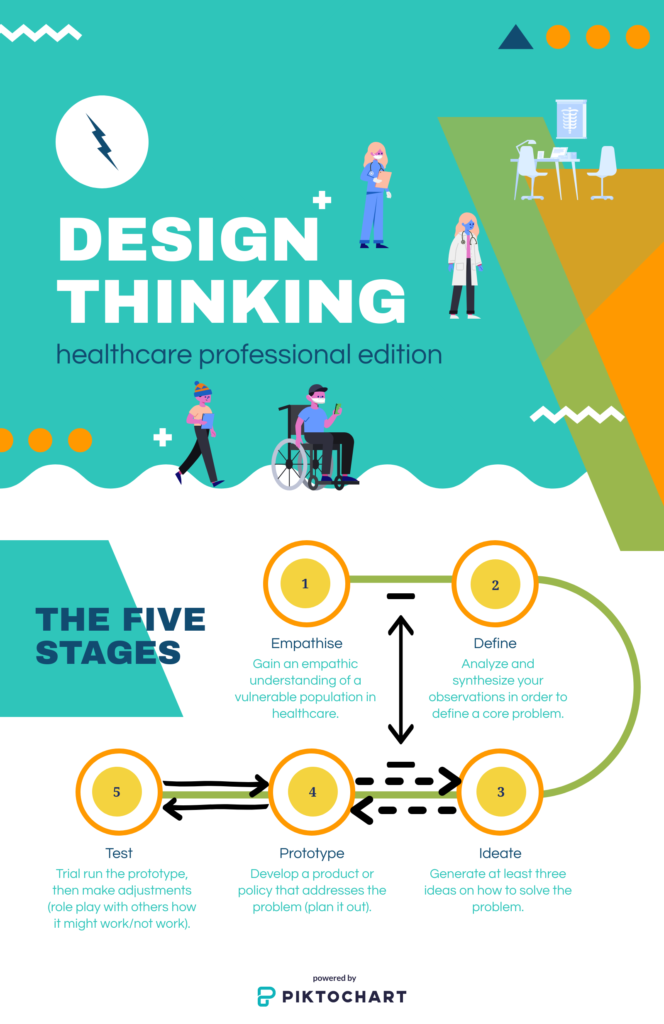Kate Martin, MD | March 29, 2022
The COVID-19 pandemic exposed significant gaps and design flaws in our healthcare system. Long-standing health disparities acutely worsened in vulnerable populations and the need to address them became even more important than ever. Problem-based learning, commonly taught in medical schools, engages students in a subject by working through a poorly-defined problem. Design thinking is a way to develop and promote creativity in the problem-solving process. Health design (a form of human-centered design) takes on the complex social problems often encountered in healthcare.
There are five stages to the health design thinking process: (1) empathize, or exercise the ability to step into other people’s shoes, to understand their lives, and start to solve problems from their perspectives; (2) define – the problem you would like to solve; (3) ideate – AKA idea generation, to find new solutions from the user’s perspective; (4) prototype creation, or map out the most important ideas to propose a solution concept; and (5) test the prototype, incorporating feedback from the user. Note that design thinking is a non-linear process, as depicted below. You can go forwards, backwards and in between!

Now that you have learned the stages of the health design process, what problem in healthcare would you fix, and better yet, how would you start? Send your health design thinker superpowers to the rescue!